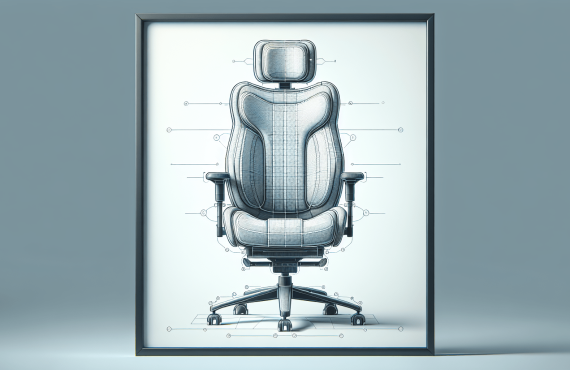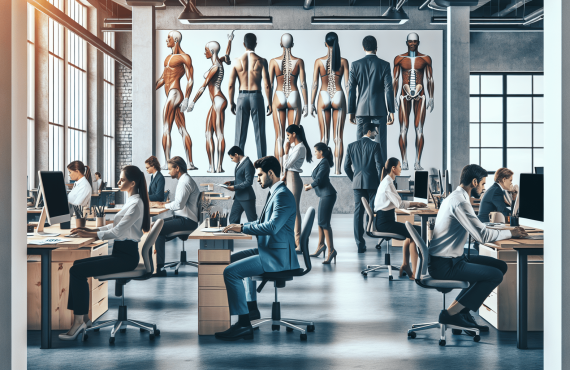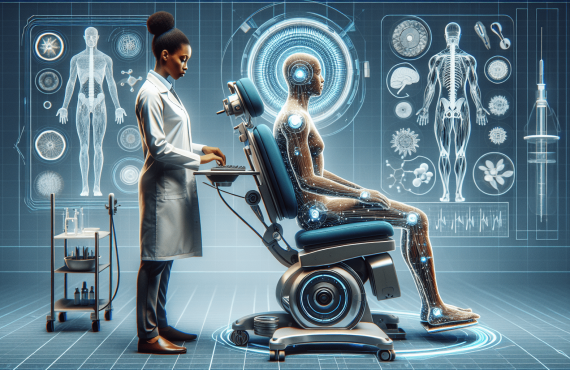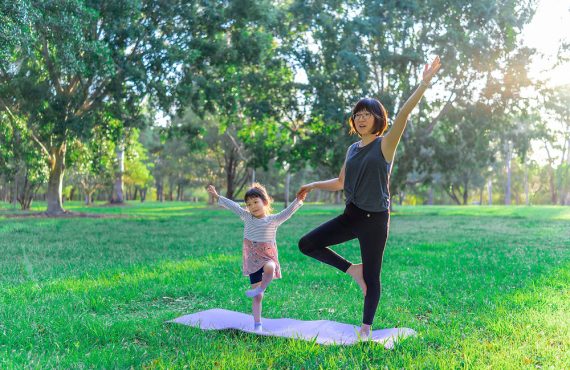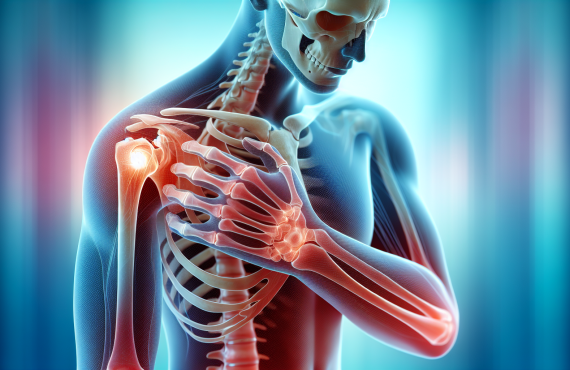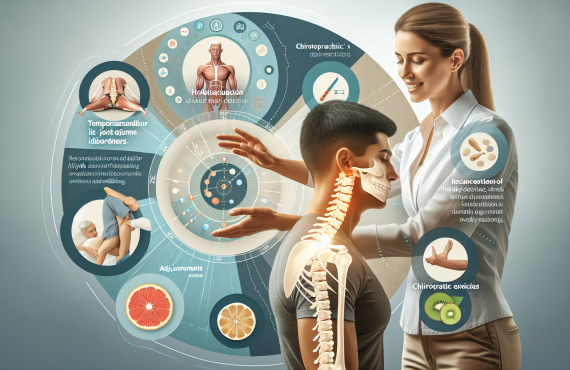If you’re looking for a chiropractic technique that focuses on precision and specificity, look no further than the Gonstead Technique. Developed by Dr. Clarence Gonstead in the 1920s, this approach emphasizes a thorough analysis of the spine and the use of hands-on adjustments to provide targeted relief. At Henry Chiropractic in Pensacola, Florida, Dr. Craig Henry and Dr. Aaron Hixon are well-versed in the Gonstead Technique and are dedicated to improving the health and wellness of their patients. With their expertise and passion for helping others, you can trust that you’re in good hands at Henry Chiropractic.
What is the Gonstead Technique?
The Gonstead Technique is a specific type of chiropractic adjustment that aims to correct spinal misalignments and restore proper function to the body. It was developed by Dr. Clarence Gonstead in the 1920s and has since become widely recognized and practiced by chiropractors around the world. The technique is known for its holistic approach and attention to detail, focusing on the unique needs of each individual patient.
Principles of the Gonstead Technique
The Gonstead Technique is based on several key principles that guide the chiropractor’s approach to treatment. These principles include:
-
Specificity: The technique aims to identify and correct the exact cause of the patient’s condition rather than treating symptoms alone. By addressing the specific misalignments and imbalances in the spine, the body can heal and function optimally.
-
Precision: The adjustments performed in the Gonstead Technique are highly precise and targeted. The chiropractor uses their hands to apply gentle force to specific vertebrae and joints, ensuring that only the necessary adjustments are made.
-
Full Spine Analysis: Unlike some other chiropractic techniques that focus only on specific areas of the spine, the Gonstead Technique takes a comprehensive approach. The chiropractor evaluates the entire spine and surrounding structures to identify areas of dysfunction and determine the most appropriate course of treatment.
-
Conservative Care: The Gonstead Technique is a conservative approach to healthcare, prioritizing non-invasive methods to promote healing and wellness. It minimizes the use of medications or invasive procedures, emphasizing the body’s natural ability to heal.
-
Patient Education: A key element of the Gonstead Technique is patient education. Chiropractors using this technique take the time to explain the diagnosis, treatment plan, and any lifestyle modifications that can support the healing process. Empowering patients with knowledge allows them to actively participate in their own health and well-being.
History of the Gonstead Technique
The Gonstead Technique was developed by Dr. Clarence Gonstead in the early 20th century. Dr. Gonstead was a mechanical engineer before becoming a chiropractor, and his background in engineering greatly influenced his approach to chiropractic care.
Dr. Gonstead believed that the position and movement of the bones in the spine directly affected the nervous system and overall health. He developed a meticulous system of analysis, using X-rays, palpation, and other diagnostic tools to identify spinal misalignments and determine the most appropriate adjustments.
Over time, Dr. Gonstead’s techniques gained recognition and popularity among chiropractors. Today, the Gonstead Technique is taught in chiropractic schools and used by practitioners worldwide. It continues to evolve and adapt to advancements in technology and understanding of the human body.
How Does the Gonstead Technique Work?
The Gonstead Technique is a comprehensive approach to chiropractic care that involves several specific steps. These steps are designed to thoroughly evaluate the patient’s condition and provide precise adjustments tailored to their unique needs. Let’s explore each step in detail:
Patient Evaluation
Before any adjustments are made, the chiropractor using the Gonstead Technique conducts a thorough evaluation of the patient. This evaluation involves taking a detailed medical history, performing physical examinations, and utilizing various diagnostic tools such as X-rays.
By gathering this information, the chiropractor can gain a complete understanding of the patient’s condition, including any underlying causes or contributing factors. This evaluation helps guide the treatment plan and ensures that the adjustments are precisely targeted to address the specific issues at hand.
Visualization
In addition to the physical examination, the Gonstead Technique places great emphasis on visualization. The chiropractor carefully observes the patient’s posture, gait, and range of motion to detect any abnormalities or imbalances. This visual assessment provides valuable insights into potential spinal misalignments and areas of dysfunction.
Instrumentation
Instrumentation is another important component of the Gonstead Technique. Specialized instruments, such as a neurocalometer, may be used to assess nerve function and identify areas of subluxation (spinal misalignment). These instruments provide objective measurements and help the chiropractor make precise adjustments based on the unique needs of each patient.
Static Palpation
During static palpation, the chiropractor uses their hands to feel for areas of tenderness, swelling, or muscle tension along the spine. This hands-on examination allows the chiropractor to identify specific vertebral segments that may be causing dysfunction or discomfort.
Motion Palpation
Motion palpation is a dynamic examination technique that involves feeling for abnormal motion or restrictions within the joints of the spine. By assessing the mobility and movement of each vertebra, the chiropractor can pinpoint areas of concern and determine the most appropriate adjustments.
X-ray Analysis
X-rays play a crucial role in the Gonstead Technique. They provide a detailed view of the patient’s spine, allowing the chiropractor to assess misalignments, degenerative changes, and other structural abnormalities. X-rays also help identify any contraindications or factors that may influence the treatment approach.
By combining these various evaluation methods, the chiropractor using the Gonstead Technique can develop a comprehensive understanding of the patient’s condition and create an individualized treatment plan for optimal results.
Benefits of the Gonstead Technique
The Gonstead Technique offers several benefits to patients seeking chiropractic care. These benefits include:
Precise Adjustments
One of the main advantages of the Gonstead Technique is its focus on precise adjustments. The chiropractor using this technique has a deep understanding of spinal anatomy and uses specific methods to ensure that adjustments are targeted to the exact areas that require correction. This precision minimizes the risk of unnecessary manipulation and maximizes the effectiveness of the treatment.
Individualized Approach
Every patient is unique, and the Gonstead Technique recognizes this by tailoring the adjustments to each individual’s needs. Rather than using a one-size-fits-all approach, the chiropractor takes into account factors such as the patient’s age, health history, and lifestyle when developing a treatment plan. This personalized approach helps achieve better outcomes and promotes overall well-being.
Faster Recovery
By identifying and addressing the root cause of the problem, the Gonstead Technique can help expedite the healing process. Correcting spinal misalignments and improving nervous system function can have a positive impact on various conditions, reducing pain, inflammation, and other symptoms. Many patients experience faster recovery times and improved overall health with regular Gonstead adjustments.
Improved Nervous System Function
The nervous system acts as the body’s communication network, transmitting messages between the brain and the rest of the body. When spinal misalignments or subluxations occur, this communication can be disrupted, leading to a range of health problems. The Gonstead Technique emphasizes restoring proper spinal alignment, which can improve nervous system function and promote better overall health.
Conditions Treated with the Gonstead Technique
The Gonstead Technique has been used to successfully treat a wide range of conditions. Some of the most common conditions that can benefit from Gonstead chiropractic care include:
Back Pain
Back pain is a prevalent condition that can be caused by a variety of factors, including poor posture, muscle imbalances, and spinal misalignments. The Gonstead Technique aims to correct these underlying issues through precise adjustments, helping to alleviate pain, improve mobility, and restore proper function to the spine.
Neck Pain
Similar to back pain, neck pain can be caused by various factors, including poor posture, whiplash injuries, and spinal misalignments. The Gonstead Technique focuses on identifying and correcting the specific misalignments in the neck, providing relief from pain and promoting optimal neck function.
Headaches
Tension headaches and migraines are often associated with muscle tension, poor posture, and spinal misalignments. The Gonstead Technique can help alleviate these conditions by addressing the root cause of the pain and restoring proper alignment to the spine.
Sciatica
Sciatica is a condition characterized by pain radiating down the leg, often caused by compression or irritation of the sciatic nerve. The Gonstead Technique can help relieve sciatica symptoms by identifying and addressing the underlying spinal misalignments or nerve impingements contributing to the condition.
Scoliosis
Scoliosis is a condition characterized by an abnormal sideways curvature of the spine. While the Gonstead Technique may not be able to fully correct scoliosis, it can help manage symptoms and improve overall function. Precise adjustments and spinal realignments can alleviate pain, reduce muscle imbalances, and promote better posture in scoliosis patients.
Joint Dysfunction
The Gonstead Technique is effective in addressing joint dysfunction throughout the body, not just in the spine. Whether it’s a shoulder, hip, knee, or any other joint, precise adjustments can restore proper alignment and function, reducing pain and discomfort.
Gonstead Technique vs Other Chiropractic Techniques
While there are several different chiropractic techniques practiced today, the Gonstead Technique stands out in several ways. Let’s explore some of the key differences and advantages of the Gonstead Technique compared to other chiropractic approaches:
Differences in Approach
The Gonstead Technique takes a highly comprehensive and specific approach to chiropractic care. It emphasizes precise adjustments, individualized treatment plans, and thorough evaluations to address the root cause of the patient’s condition. Other techniques may use more general adjustments or focus on specialized areas, without the same level of attention to detail as the Gonstead Technique.
Effectiveness and Results
Many patients report significant improvements in their symptoms and overall well-being with the Gonstead Technique. By targeting specific misalignments and optimizing nervous system function, the technique can provide long-lasting results for various conditions. While other chiropractic techniques may also offer benefits, the Gonstead Technique’s precision and individualized approach often yield exceptional outcomes.
Patient Experience
The Gonstead Technique prioritizes patient comfort and satisfaction. The precise adjustments used in this technique minimize discomfort and maximize effectiveness, leading to a positive patient experience. Additionally, the personalized treatment plans and patient education provided by Gonstead chiropractors empower the individual to actively participate in their own health journey.
Finding a Gonstead Chiropractor
If you are interested in trying the Gonstead Technique or believe it could benefit you, it is essential to find a qualified and experienced Gonstead chiropractor. Here are some tips for finding the right practitioner:
Research and Recommendations
Start by conducting thorough research on local chiropractors who specialize in the Gonstead Technique. Look for reviews and testimonials from previous patients to get an idea of their reputation and the quality of care they provide. Additionally, ask family, friends, or healthcare professionals for recommendations or referrals.
Credentials and Licensing
Ensure that the chiropractor you choose is properly licensed and accredited. Check that they have received the necessary education and training to provide chiropractic care, especially in the Gonstead Technique. You can usually find this information on their website or by contacting their office directly.
Experience and Expertise
While credentials are essential, experience and expertise are equally valuable. Look for chiropractors who have been practicing the Gonstead Technique for a significant period. A chiropractor with years of experience in this technique is more likely to have refined their skills and can provide high-quality care.
What to Expect During a Gonstead Adjustment
If you decide to undergo a Gonstead adjustment, here is what you can expect during the process:
Initial Consultation and Evaluation
Before any adjustments are made, the chiropractor will conduct an initial consultation and evaluation. They will review your medical history, discuss your symptoms or concerns, and perform various physical examinations. They may also order X-rays to assess your spinal health and identify any areas of concern.
Adjustment Process
Once the chiropractor has gathered all the necessary information, they will perform the adjustment. The specific techniques used will depend on your unique condition and needs. The adjustments are performed manually or with the assistance of specialized instruments, ensuring precise targeting of the affected areas. The chiropractor will communicate with you throughout the process, explaining each step and ensuring your comfort.
Aftercare and Follow-up
After the adjustment, the chiropractor will provide aftercare instructions and recommendations. These may include specific exercises, stretches, or lifestyle modifications to support the healing process. Follow-up appointments may also be scheduled to monitor your progress and make any necessary adjustments to your treatment plan.
Patient Testimonials
The Gonstead Technique has helped countless patients experience relief from pain and improve their overall health. Here are some real-life stories of individuals who have benefited from the Gonstead Technique:
Case Studies and Success Stories
-
Julie, a 35-year-old office worker, had been struggling with chronic back pain for years. After trying various treatments, she sought the help of a chiropractor trained in the Gonstead Technique. Through precise adjustments and individualized care, Julie experienced significant pain relief and improved flexibility, allowing her to enjoy her daily activities without discomfort.
-
John, a 50-year-old construction worker, was dealing with severe sciatica that was affecting his ability to work. With regular Gonstead adjustments, his chiropractor was able to identify and correct the underlying spinal misalignments causing the sciatica. Over time, John’s symptoms improved, and he was able to regain full function and return to work pain-free.
Frequently Asked Questions about the Gonstead Technique
Here are answers to some commonly asked questions about the Gonstead Technique:
Is the Gonstead Technique Painful?
The Gonstead Technique aims to provide precise adjustments with minimal discomfort. While some patients may experience mild soreness or discomfort immediately following the adjustment, it is generally well-tolerated. Chiropractors using the Gonstead Technique take great care in ensuring patient comfort throughout the process.
How Long Does a Gonstead Adjustment Take?
The length of a Gonstead adjustment can vary depending on the complexity of the case and the individual needs of the patient. On average, a single adjustment may last anywhere from a few minutes to 20 minutes. However, it is important to remember that the focus is on quality rather than speed, and the chiropractor will take the necessary time to ensure proper adjustments are made.
How Many Sessions are Needed?
The number of sessions needed varies from patient to patient and depends on several factors, including the severity of the condition and how well the individual responds to treatment. Some patients may find relief after just a few sessions, while others may require ongoing care to maintain optimal spinal health. The chiropractor will develop a treatment plan specifically tailored to your needs and provide recommendations regarding the frequency and duration of care.
Is the Gonstead Technique Suitable for Everyone?
The Gonstead Technique can be beneficial for a wide range of individuals, from children to older adults. However, there may be specific contraindications or considerations for certain individuals. It is important to consult with a qualified chiropractor who can assess your unique situation and determine if the Gonstead Technique is appropriate for you.
Are There any Side Effects?
Side effects from the Gonstead Technique are generally minimal and temporary. Some patients may experience mild soreness or discomfort following the adjustment, similar to the sensation after a workout. These effects typically subside within a day or two. Serious complications are rare, especially when the technique is performed by a qualified chiropractor.
Conclusion
The Gonstead Technique is a highly effective and precise approach to chiropractic care. Its focus on individualized treatment and comprehensive evaluation sets it apart from other techniques, providing patients with exceptional results. Whether you are seeking relief from back pain, neck pain, headaches, or other conditions, finding a qualified Gonstead chiropractor can be the first step toward improved health and well-being. Take the time to research and choose a chiropractor who specializes in the Gonstead Technique, and you will be on your way to a healthier, more vibrant life.









